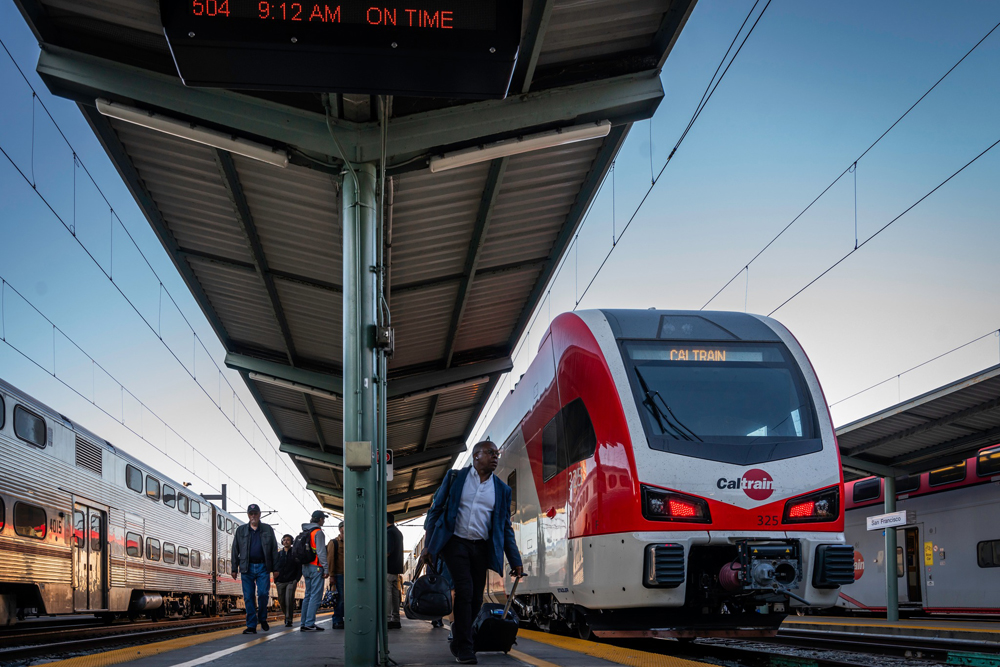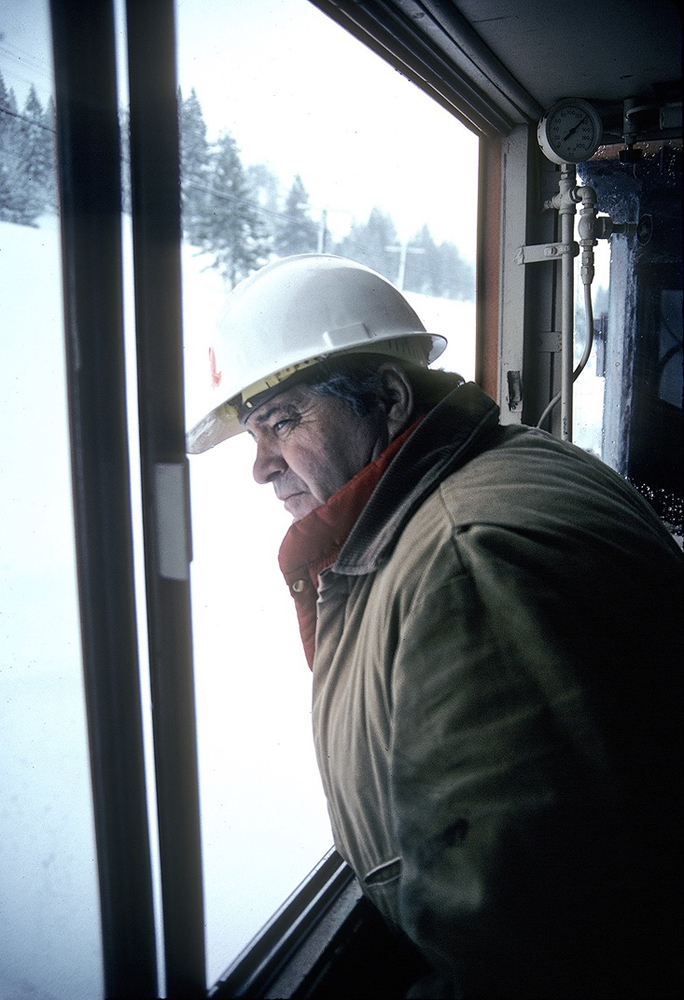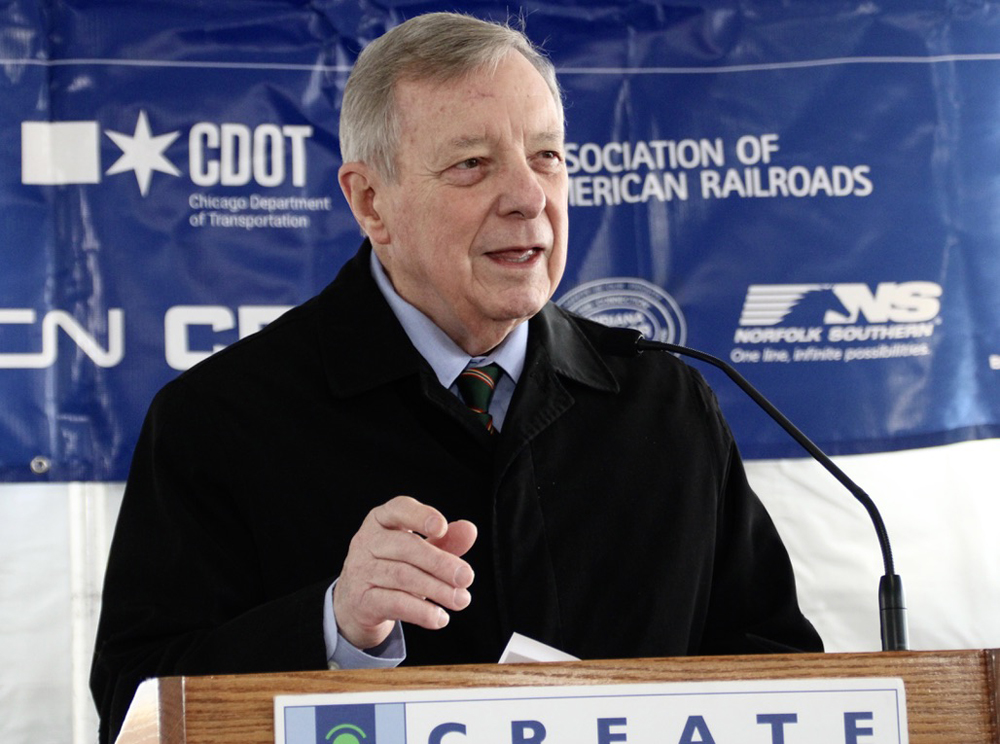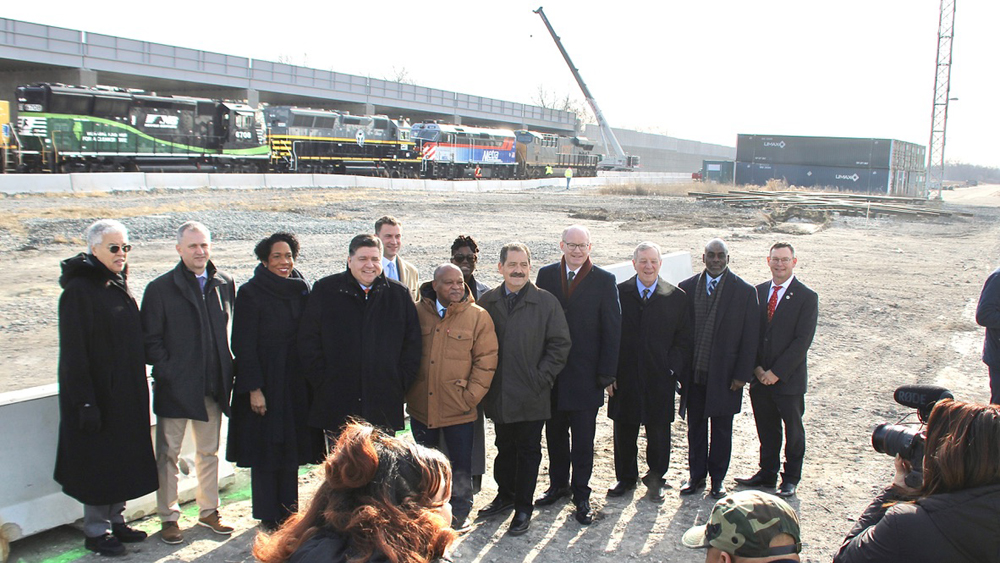Ward’s answer was the CSX of Tomorrow strategy, which aimed to invest in the mainline and terminal projects necessary to boost efficiency, improve service, and attract new merchandise and intermodal traffic.
Harrison seems to agree with at least some elements of the strategy. And he acknowledges the need to convert truck traffic to the rails.
“We lost a lot of business to the highway. There’s the possibility that that shift could be swinging back,” Harrison tells Reuters this week.
But Harrison’s primary answer, of course, is precision scheduled railroading. He used the system to turn Illinois Central, Canadian National, and Canadian Pacific into ultra-efficient and highly profitable railroads over the past three decades.
CP’s key operating metrics all improved dramatically during Harrison’s tenure. From 2012 through 2016, average train speed improved 31 percent; terminal dwell declined 11 percent; fuel efficiency improved 15 percent; and train length grew 21 percent, according to an investor presentation. These efficiency gains, combined with rate increases, helped to triple CP’s profit margin.
While CP was pursuing a merger with Norfolk Southern in 2015, Harrison said he would wring $1.2 billion in operational improvements out of NS. Parking a third of the NS locomotive fleet, cutting employment levels, and shutting some hump yards were included in Harrison’s plan for CSX’s eastern rival.
Harrison reduces costs largely through the productivity gains that come from streamlining operations and making the most of assets, from locomotives and cars to train crews and yards.
Precision railroading has seven service-design principles, Harrison wrote in his book, “How We Work and Why,” published in 2005 while he was CN’s CEO. They are:
- Minimize car dwell time in yards. Since cars spend most of their time in yards, reducing dwell time is the most effective way to improve car velocity, or the number of miles they travel per day.
- Minimize car classifications. Switching a car as few times as possible also reduces car cycle times, allowing the railroad to use fewer cars. Build large blocks of traffic or, in lower-density lanes, haul a block as close as possible to the destination to minimize handling at intermediate yards en route.
- Use multiple traffic outlets. By having more than one way to get a block of cars to its destination, a railroad can balance traffic flows, improve transit times, and reduce the need for extra trains.
- Run general-purpose trains. A unit train is more efficient only when loading and unloading times are 24 hours or less, the train shuttles between the same origin and destination, and operates seven days a week in each direction. Unless a train meets all three criteria, run the traffic in general-purpose trains.
- Balance train movements by direction. Canceling trains on low-volume weekend days can leave locomotives and crews in the wrong places, resulting in deadhead moves that increase costs.
- Minimize power requirements. Get the most out of every locomotive, the most expensive piece of rolling stock on the railroad. Limit hours spent idling and maximize available horsepower.
- Strive for steady workflow. Avoid surges and lulls by leveling out work as much as possible across every location on the railroad.
These principles are Railroading 101. Add them all up, and a railroad can move the same amount of traffic with fewer locomotives, cars, yards, shops, and people. The CN of 2003, for example, moved more traffic with 40 percent fewer locomotives than it had in 1998.
But Harrison warns that implementing this plan is as much art as science.
“Due to the complex interconnectedness of rail operations, optimizing one doesn’t necessarily optimize the rest,” Harrison wrote of the seven service-design principles. “In fact, too great a focus on any one principle can have a negative impact on others. Balance is the key.”
Harrison has been able to strike the right balance, although his methods sometimes alienated customers at CN and CP, and rankled rail labor.
It’s not yet clear what, if anything, Harrison will adopt from the CSX of Tomorrow strategy. But some aspects of CSX of Tomorrow – such as running longer trains more reliably and on tighter schedules – align with Harrison’s operating principles.
Under Ward, CSX over the next couple of years planned to extend or add 27 sidings on its corridor linking Chicago and Florida, where trains have bumped against the current 6,500-foot siding length. It’s the only leg of the railroad’s high-density outer triangle that can’t handle long trains. CP and CN both lengthened sidings while Harrison was at the helm.
Like other Class I railroads, CSX faces economic threats from the long-term decline of coal, new regulations, and the potential for self-driving trucks.
“Cost cutting, the EHH specialty, cannot be the only answer,” says independent analyst Anthony B. Hatch. “The opportunities to grow are highly service oriented, and require capital, finesse, IT as well as productivity improvements – intermodal, particularly domestic, and merchandise.”
How much will Harrison blend precision railroading and CSX of Tomorrow? Stay tuned.














you want more cost cutting DUMP ( E. Hunter Harrison ) &( Mantle Ridge ) . Between the two of them you will save $ 169,000.000.00 that’s a big savings plus jobs , End of story
Mr. Oltmann:
Very interesting and insightful summary and analysis you provide here, thanks.
I would just weigh in on the extensive conversation here by saying there are considerable differences in physical/operating characteristics between CP Rail and CSX (at the risk of restating the obvious?). CP of course having much longer line hauls “out west” and CSX have shorter city-to-city corridors.
CSX also has a lot of yards/terminals, some of which could and perhaps should (and may have already been) mothballed or made redundant. Since it is no longer the coal-conveyor belt that it was, the old Clinchfield RR has in essence been mothballed and may never see through service again. There was a lot rail infrastructure supporting the coal business, which is now gone, and therefore this rail infrastructure may not be of use for the “new” CSX business lines (through intermodal trains don’t need a lot marshalling yards in Ohio and West Virginia).
While it is encouraging that Mr. Hunter recognizes that a lot of business has been lost to the truckers and there are opportunities for CSX to regain some of this traffic (and make up for some of that $2B+ in lost coal revenues), it would seem to me that service reliability for CSX will be a real challenge for this just in time / higher service focused business. Mirroring the NS’s “TOPS” plan will probably need to occur at CSX too (maybe they’re already working on this?)
It would also seem to me that in order to regain this lost business that CSX will need to have a much more aggressive and proactive marketing outreach to potential customers. It sounds like Michael Ward and his team might already have started this but there is probably plenty more to do.
I remember hearing a presentation from a gentleman from a new shortline railroad in Southern Michigan many years ago (late 80s) and he remarked how they had no contact or marketing outreach from CSX (their sole outside connecting Class I RR) about business development, carload connections, rate divisions, operations, etc. whatsoever. Admittedly this was in the late 80s during the post- Staggers’ act downsizing era of Class I RRs, but I don’t get a strong sense that the Class I’s have really rebuilt a robust marketing division to “go after the business”. Perhaps I’m wrong or off on this point, but it doesn’t sound like marketing has been a Class I strong point in many years, if ever.
It will be interesting to see what develops and as others have observed, it probably will be unhappy times for CSX employees during this tough transition time, even if it ends up being good for CSX long term.
Also not sure that CSX’s operating ratio improvements under EHH will match that of CP, but we shall see ….
EHH’s principles are pretty much in play everywhere these days. CP might have been the last of the great unwashed.
NS has been doing this since 2002. CSX’s followed a few years later.
I will be very surprised if wring more than a few percentage points out of CSX’s OR in the coming year.
Let’s take a look….
Minimize car dwell time in yards.
Minimize car classifications.
Use multiple traffic outlets.
Run general-purpose trains.
Balance train movements by direction.
Minimize power requirements.
Strive for steady workflow
These were the guiding principles behind NS’s TOP plan that launched in 2002. It turned NS from a “run tonnage trains” RR into a “build an efficient plan and then run the plan” RR.
To that end, the key measures for transportation on NS focus on running trains on time, making connections at handling locations, and making scheduled pick up and set outs en route.
Every iteration of the plan is measured for these critical components including crew and power balance using a variety of in-house tools and simulations that allow rapid prototyping and testing. Current efforts are focused on tools that aid running plan compliance and intelligent analysis of tactical changes (annul, combine, run extra decisions)
There are two more strategic guiding principles used at NS. “Minimize train plan complexity” and “maximize block swaps”.
En route pick up and set off activity add congestion, slow the network and decrease service reliability. You have to be very careful about adding work to train schedules.
Maximizing block swaps is important because it’s a way to reduce dwell by creating long haul blocks for places where you otherwise don’t have a long haul train in the plan. You really can’t process a car faster than 10 hours in a hump yard. You can block swap a block in an hour or two.
The two that have the least relevance on NS are “use multiple traffic outlets” and “run general purpose trains”.
Multiple outlets only works when you can still get the car to the customer at the same promised time. Fortunately, NS’s ABC blocking and car trip planning processes can do this. But, it turns out, the effect of doing this is minimal and the ability to use this in generating a train and blocking plan are difficult. Nearly every place it would be advantageous to have multiple trains or routes for a particular lane, there are better opportunities to pre-block or build long haul blocks with a block swap en route that reduce dwell and/or minimize handling. It might help you balance traffic and avoid the occasional extra train on a tactical basis in a few locations, but the overall impact is so slight that it hasn’t been worth the effort to implement. (there are all sorts of evil things that can happen when you start moving traffic off it’s trip plan.)
You also have to know that NS has less than two handlings per merchandise car load (not counting origin and destination serving yard/interchange)
“Run general purpose trains” depends a great deal on alignment of terminals. Could you “fill out” a Croxton to Chicago intermodal train by tacking an empty crude oil train to the rear at Harrisburg? Sure. You could get it over the road just fine. Do you have a place at Harrisburg for it? No. Could you pick it up at Enola instead? Only if UPS wouldn’t mind a missing sorts on a bunch of their parcels. Do you have the hour to spare getting the DPU link going? No. Do you have a place for it in Chicago? No. Would it impact the reliable use of long pool crews on the route. Yes. So, could you? Yes. Should you? No.
Could you make a case for moving grain from silo to feed lot in the general merchandise network? Maybe. It would be an interesting exercise. But, grain trains are less than 5% of NS’s trains miles. My hunch is that the increase in complexity would wash out any benefits.
Robert Hoover: Does the A line double tracking make it as far south of Carson as Stony Creek (6 miles)?
As I recall, commentators in this magazine lamented removing the double track IC into single track with long sidings. The longer sidings you have, the closer you come to a double track railroad which means more directional track operation). I wonder if we are going to see double tracking as a solution to capacity.
“How to replace nearly $2 billion in coal revenue that vanished over the past five years and is likely gone for good.” Cut out at least $2 billion in costs. Pretty simple. Coal (and especially coal employment) has been dropping for decades. If you pretend like it’s coming back, you might as well start working on the bankruptcy package now.
Clearly, he’ll go after new business, too, and moving trains instead of stopping trains (in sidings, in yard, etc) is the only way to do that.
Probably going to suck if you work there but the company will be healthier as a result.
Trailers, grain, and coal operating ratios.
I will say, last year CSX added several miles of second track (concrete ties and everything) on the A Line running south from Collier Yard in Petersburg to just south of Carson Va., and in previous years had lengthened some sidings on the stretch south to at least the single track bridge at Weldon NC, which is where the former SAL line to Portsmouth VA takes off to the east. The A Line has the right of way available for a second track to Rocky Mount NC due to its formerly being a two track main into the 1950s at least, which capacity they might have needed for the planned intermodal yard just north of Rocky Mount.
(I worry for Sand Patch Grade, the West End, and the Cumberland and Huntington Shops)
Signed,
A former resident of multi-multi track Western PA still confused by single track RR-ing